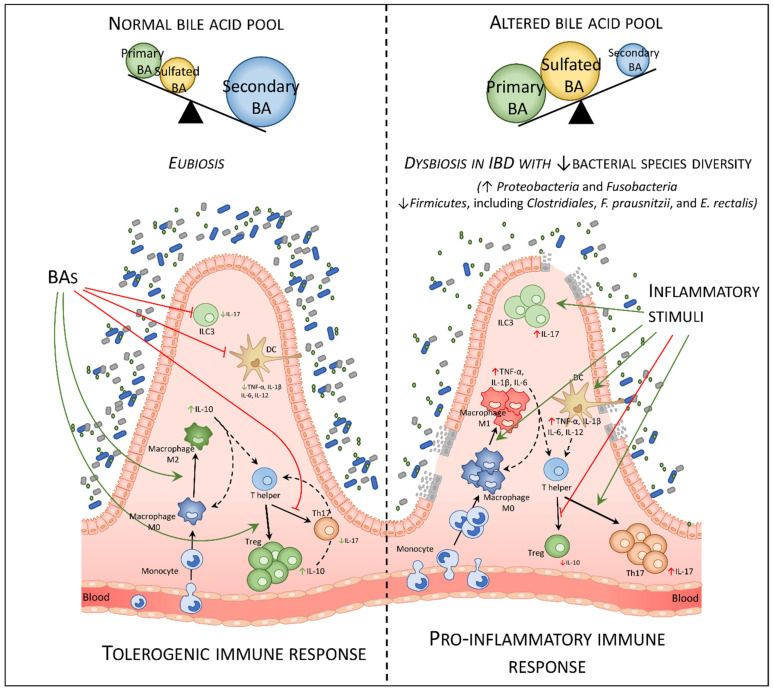Figure 1.
Microbiota, bile acid pool, and regulation of intestinal immunity. In a healthy condition, the majority of bile acids are actively reabsorbed by the enterocytes by apical transporter ASBT, and are transported back to the liver through the portal blood, thus limiting BA loss through feces to 3%–5% of daily secreted BAs. BAs reaching the colon are metabolized by the intestinal microbiota which transforms primary bile acids into secondary bile acids and other derivatives which therefore make up the majority of the bile acid pool. BAs through agonism on FXR and GPBAR1 and antagonism on RORγt (inverse agonism) regulate the immune system by inducing a tolerogenic response. The action on these receptors induces the polarization of macrophages and helper T cells towards an anti-inflammatory phenotype, respectively macrophages M2 and Treg, with the up-regulation of IL-10 production, and inhibits the activation of DCs, ILC3, and Th17 by reducing the production of pro-inflammatory cytokines (i.e., IL-6, IL-1β, TNF-α, and IL-17). In patients with IBDs, the alterations of the intestinal epithelium reduce the reabsorption of bile acids and therefore increase the quantity of bile acids that are eliminated with the feces. Furthermore, patients with IBDs have a dysbiosis of the intestinal bacterial flora with a decrease in bacterial species diversity, which strongly decreases the enzymatic capacity of the microbiota, resulting in a lower ability to metabolize primary bile acids into secondary bile acids and other derivatives. After breach of the epithelial barrier, or pathogenic invasion, molecules like LPS activate macrophages, DCs, and ILC3, inducing the production of pro-inflammatory cytokines, IFN-γ, TNF-α, IL-6, IL-1β, and IL-17, with an increase in the polarization of M0 macrophages toward a pro-inflammatory M1 phenotype. M1 macrophages and activated DCs therefore induce production of effector T cells (i.e., Th17) and up-regulation of the expression of chemokine CCL2 in the colon, which recalls more monocytes from the blood to the lamina propria of the colon.

